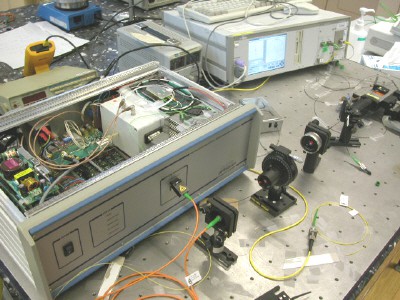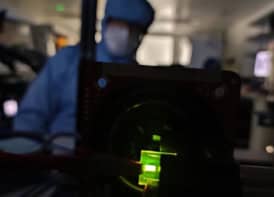Physicists in Switzerland have confirmed that information cannot be transmitted faster than the speed of light. Nicolas Gisin and colleagues at the University of Geneva have shown that the "group velocity" of a laser pulse in an optical fibre can travel faster than the speed of light but that the "signal velocity" - the speed at which information travels - cannot (N Brunner et al. 2004 Phys. Rev. Lett. 93 203902).

Two types of velocity are used to describe the propagation of a wave in a dispersive medium: the phase velocity and the group velocity. The phase velocity is the speed at which light of a single wavelength moves. However, pulses of light contain a range of wavelengths, which all move at different speeds in a dispersive medium. The group velocity is the speed at which the pulse moves. In particular, the energy travels at the group velocity rather than the phase velocity.
In recent years, physicists have shown that both these velocities can exceed the speed of light in certain situations without breaking the laws of special relativity. This means, therefore, that neither the group nor the phase velocity can be used to describe the speed at which the information in the pulse travels, and we need to define it by another velocity – the “signal velocity”. This is defined as the speed at which the “front” of the pulse travels. According to relativity, this speed can never exceed the speed of light in a vacuum because, if it did, it would be equivalent to sending the signal backwards in time, which would violate causality.
In their experiment, Gisin and colleagues sent a pulse of polarized photons into an optical fibre that was sandwiched between an input and an output polarizer. The fibre is birefringent, which means that it splits the pulse into two pulses that are orthogonally polarized to each other. By carefully choosing the correct input and output polarizations, the Geneva team found that it could obtain constructive interference for photons at the front of the pulse and destructive interference for photons at the rear. Since only photons at the front give rise to a signal, the team was able to measure the time it took for these to arrive at a detector.
Gisin and colleagues plotted counts against the time-of-arrival of the photons (see figure). Using this graph, they calculated a mean group velocity that was 1.76 times the speed of light in vacuum. More importantly, they measured the signal velocity for the first time and showed that the increase in the group velocity does not increase the speed at which information travels.




